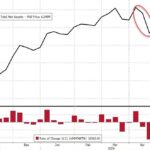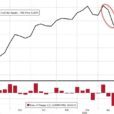
According to the financial press we have had some swell economic numbers in the last two days—so it’s giddy-up-and-go time for the stock market again. Thursday’s industrial production number was allegedly gangbusters and today’s housing start figure for October was described as a “boom” by the incorrigible headline writers at MarketWatch:
The Commerce Department on Friday said October housing starts surged, rising 13.7% to a seasonally adjusted annual rate of 1.29 million.
Obviously, “surge” is a very different thing than “flat” or “punk”, but those latter terms are exactly what was reported by the Commerce Department this AM.
Last October, for example, single family housing starts posted at a 871,000 SAAR (seasonally adjusted annual rate) and for October 2017 they came in at 877,000. Recalling that this minute difference represents an annualized rate, what we are really talking about here is roughly a 500 start gain for the month of October on a Y/Y basis. And that’s for the entire US of A where the total housing stock consists of about 135 million units!
So we’d be inclined to call the housing number flat and move on.
But when actually viewed in historic context, “punk” is the better word for it. As shown in the chart below, after 101 months of so-called recovery from the May 2009 bottom, we are still 51% below the pre-crisis peak; and, in fact, the “surging” number reported for last month is the same annual rate as was posted back in June 1991.
That’s right. With respect to the heart of the housing market—new construction of single-family homes—we are back to the future of 26 years ago.
Moreover, that’s also to ignore the fact that the US population has increased from 253 million to 326 million in the interim; and, more importantly, there has also been a 33% increase in the number of households needing shelter. That number is up from 93 million to 126 million.
So as the man said: Context please!

To be sure, there are other factors at work that influence the trend of single family starts. These include the over-building during the Greenspan subprime/housing boom, and also the fact that single family housing affordability has withered dramatically for young households burdened with student debt and wage earning families who have been left behind in Flyover America. Both have been forced to become renters and apartment dwellers.
















